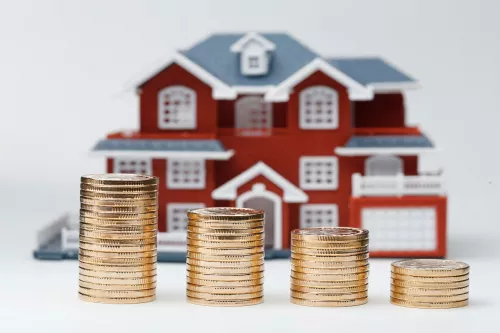Buyer Optimism
Despite ongoing concerns about affordability and interest rates, the majority of first-time homebuyers are optimistic about the housing market in 2024, encouraged by a slight decrease in home prices from their peak in 2023.
One annual survey, which included 1,009 Americans planning to buy their first home in 2024, revealed that 74% of potential buyers are optimistic and 97% have begun the homebuying process.
However, interest rates remain a significant concern, with many buyers needing to navigate low home supply and relatively high prices. Surprisingly, 46% of low-to-moderate income respondents are unaware of down payment assistance programs, and concerns about down payment affordability and monthly expenses are prominent.
Nearly two-thirds of respondents worry about overspending on their first home, but there's an increased interest in adjustable-rate mortgages and down payment assistance, indicating a shift towards diverse financing options to achieve homeownership.
2024 Housing Market Challenges
As the 2024 spring home-buying season looms, the housing market grapples with a trifecta of high mortgage rates, soaring home prices, and a scant housing stock, casting a shadow particularly over first-time buyers.
The recent slight decline in home prices does little to ease the lingering affordability issues carried over from 2023, with experts forecasting a modest uptick in prices, albeit with regional disparities.
The consensus suggests that the market won't find its equilibrium any time soon. A market rebound hinges on a delicate balance between boosting the housing inventory and tempering mortgage rates, with a gradual approach deemed essential to averting a sudden spike in demand that could offset any progress in inventory levels.
While some industry optimists anticipate a more favorable market in 2024, underpinned by stabilizing interest rates, the anticipated increase in housing supply, especially for entry-level homes, may remain elusive until mortgage rates retreat to the more palatable low 5% range, leaving the high price conundrum unresolved.
2024: A Look at the Details
Let’s take a look at the details of the real estate market in the months of January and February of 2024 (source: US Department of Housing and Urban Development):
January 2024
Purchase of New Homes Rose
In December, more people bought brand-new houses. The number of new single-family homes sold went up by 8% to 664,000 houses, compared to 615,000 houses sold in November. This was also a 4.4% increase from the same time last year.
Over the whole year of 2023, 668,000 new homes were sold, which is 4.2% more than the 641,000 homes sold in 2022, making it the busiest year for new home sales since 2021.
It's important to know that these numbers are based on how many people agreed to buy a house, not like the sale numbers for homes that have already been lived in, which are counted when the sale is officially done. Also, the number of new homes sold each month can change a lot.
Decline in Construction of Single-Family Homes
In December, fewer new single-family homes were built. The number dropped by 8.6% from November, with builders starting 1.027 million homes compared to 1.124 million the month before. However, this was still 15.8% more than the same time last year.
For buildings with 5 or more homes inside, construction went up by 7.5% to 417,000 homes in December, from 388,000 in November, but this was still 9.5% less than last year. It's good to remember that the number of these larger buildings being built can change a lot from month to month.
Throughout all of 2023, there were 1.413 million new homes built, which is 9.0% fewer than the 1.553 million homes built in 2022. Specifically, construction of single-family homes went down by 6.0%, and construction of larger buildings with multiple homes dropped by 14.2% in 2023.
FRM Rates Declined
In January, the interest rates for 30-year home loans dropped to the lowest point they've been since May 2023. On the week ending January 18, the average rate for these loans was 6.60%, just a tiny bit lower than the 6.61% in December.
Throughout 2022, these rates kept going up because the Federal Reserve raised its interest rates, hitting a peak at 7.08% in November 2022. But then, the rates started to fall, reaching down to 6.09% in February 2023 when it looked like prices weren't going up as fast.
However, the rates went up again, reaching 7.79% in October 2023, as the economy showed signs of strength, which usually makes rates go up. But in the last three months, as the rise in prices started to slow down, the mortgage rates have been coming down again.
February 2024
Purchase of New Homes Rose
In January, the number of brand-new houses that were sold went up a little bit, by 1.5%, to 661,000 houses. This is slightly more than the 651,000 houses that were sold in December, and it's also 1.8% more than the number of houses sold at the same time last year. It's important to remember that the number of new houses sold can change a lot from one month to the next.
Construction of New Homes Declined
In January, fewer new houses were started compared to December. The number of new single-family homes being built dropped by 4.7% to 1.004 million homes, down from 1.054 million homes in December.
Despite this drop, it's still 22.0% more than the number of homes that were started at the same time last year. For larger buildings with 5 or more homes, construction fell a lot by 35.8% to 314,000 homes, down from 489,000 in December, and this was also 37.9% less than last year.
It's worth mentioning that the number of these larger buildings being built can change quite a bit from one month to the next.
Increased Inventory of Homes for Sale
In January, there were more homes on the market, both brand-new ones and those that have been lived in before. The number of new homes up for sale was 456,000, which is a little bit more than the month before and 3.9% more than last year.
This amount of homes would take about 8.3 months to sell, which is the same as it was in December. As for homes that have been lived in before, there were 1.010 million available in January, which is 2.0% more than the month before and 3.1% more than last year.
However, because more people were buying homes, the number of months it would take to sell all these existing homes went down slightly from 3.1 months in December to 3.0 months in January.
Affordability has Improved
In the last part of 2023, it got a bit easier to buy or rent a home. A special score called the Homeownership Affordability Index went up a little, meaning people found it somewhat easier to buy homes than before.
This happened because families were earning more money and the average price of a house went down, even though the interest rate on home loans went up a bit. There's also a score for how affordable renting is, which went up slightly, showing that renting got a bit easier too.
This was because the money renters were making went up a little, which helped even though the cost to rent a place also increased a bit. However, both these scores are still under 100, which means that the average family or renter still doesn't make quite enough money to easily afford a typical home or rental.
In 2024, the housing market presents a landscape of cautious optimism amidst notable challenges. First-time buyers are notably optimistic, spurred on by a minor decline in home prices from their peak in 2023.
A significant majority are actively pursuing home purchases, undeterred by the hurdles of high interest rates, a scant housing supply, and a general lack of awareness about helpful down payment assistance programs.
Despite these obstacles, the slight increase in home affordability and inventory, particularly for new homes, signals a potential shift towards greater accessibility, albeit with persistent challenges in affordability and supply.
The market dynamics in early 2024 reflect a blend of hopeful buyers and systemic constraints. Sales of new homes have risen, indicating a strong demand, yet the construction of new homes, especially single-family units, has declined, exacerbating supply issues. While mortgage rates have seen fluctuations, a general downward trend could enhance affordability.
The increase in home inventory, alongside a modest improvement in the affordability of buying and renting, paints a picture of a market grappling with balancing demand with accessible homeownership and rental options. Despite the hurdles, the market's slight positive shifts offer a glimmer of hope for those looking to enter the housing market.

 Marcio Vasconcelos
Marcio Vasconcelos





